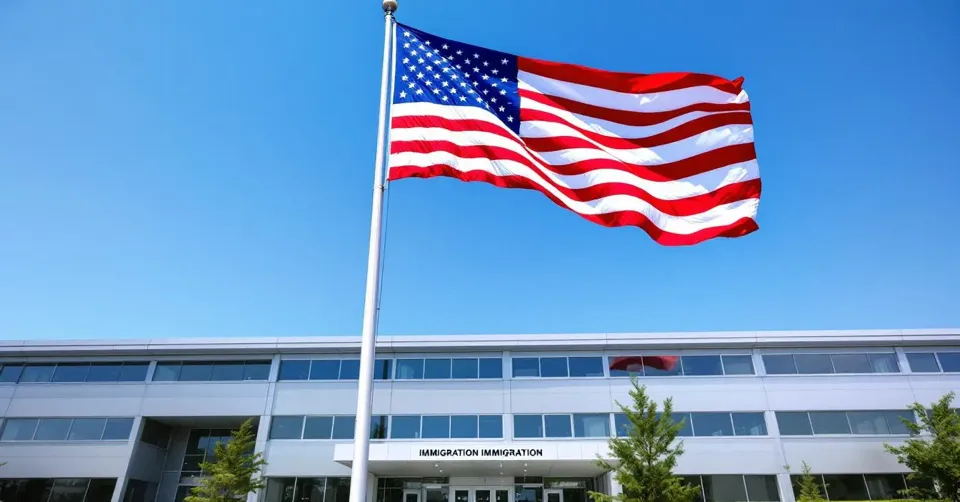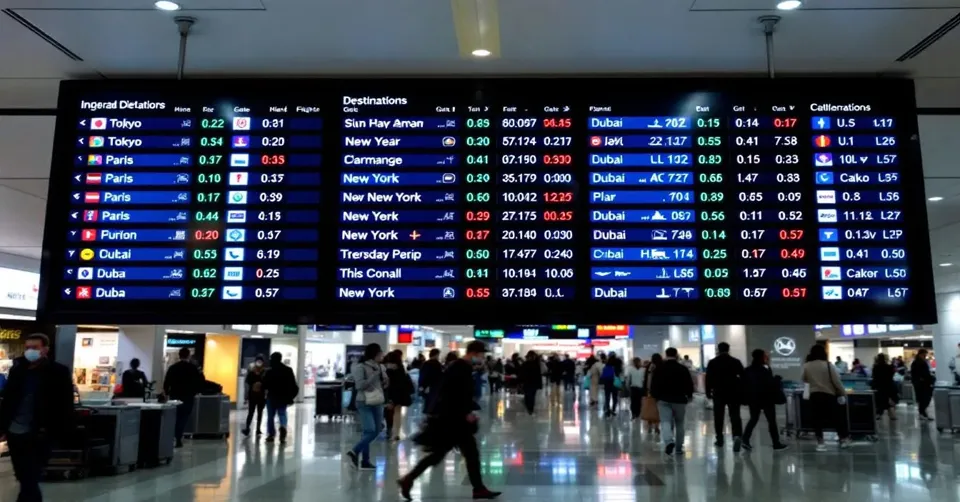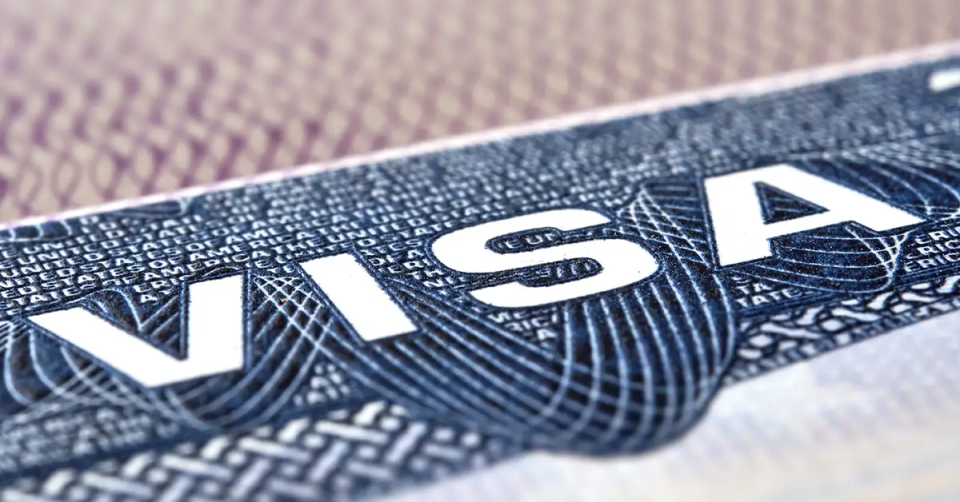The confusion between green cards and visas costs many foreign nationals their immigration dreams every year. Despite both being crucial immigration documents, they serve fundamentally different purposes and offer different rights and protections. Understanding the distinction between a green card vs visa isn’t just academic—it’s the difference between temporary status that can end abruptly and permanent residence that opens the door to U.S. citizenship.
As immigration attorneys, we regularly encounter clients who have made costly mistakes because they didn’t understand these critical differences. The stakes couldn’t be higher: choosing the wrong pathway can result in years of delays, thousands of dollars in wasted fees, and in some cases, permanent bars from entering the United States.
What is a U.S. Visa?
A visa is an official document issued by the State Department through U.S. consulates and embassies abroad, granting foreign nationals permission to seek entry to the United States for specific, authorized purposes during a temporary period. The visa itself doesn’t guarantee admission—Customs and Border Protection makes the final decision when you arrive at the port of entry.
Understanding visa categories is crucial because each type comes with specific restrictions, expiration dates, and limitations that directly impact your ability to remain in the country legally. Immigration law distinguishes between two fundamental types of visas, each serving different purposes and offering different pathways forward.
Non-Immigrant Visas (Temporary Status)
Non immigrant visas are designed for foreign nationals who intend to visit the United States temporarily for specific purposes such as tourism, business, education, or specialized work. These visas have defined expiration dates and require the holder to maintain temporary intent—meaning you must demonstrate that you plan to return to your home country when your authorized stay ends.
Common non immigrant visa categories include:
- B-1/B-2 tourist visas: For business meetings or vacation travel, typically valid for 6 months per entry
- F-1 student visas: For full-time academic study, valid for the duration of your educational program
- H-1B work visas: For specialty occupations requiring a bachelor’s degree, initially granted for up to 3 years and extendable to 6 years maximum
- L-1 visas: For intracompany transfers, allowing executives and specialized workers to transfer to U.S. offices
The critical limitation of most non immigrant visas is that they don’t provide a direct path to permanent residence. If you enter on a B-2 tourist visa, for example, you cannot legally work in the United States, and any attempt to do so violates your status and can result in deportation and future bars to entry.
Work visas like the H-1B are particularly restrictive because they tie you to a specific employer. If you lose your job or want to change employers, you typically need your new employer to file a new petition, and you may need to leave the country if there are gaps in your authorization.
Immigrant Visas
Immigrant visas represent a fundamentally different category—they provide immediate permanent residence upon entry to the United States. When you receive an immigrant visa from a U.S. consulate abroad and enter the country, you automatically become a lawful permanent resident, and Citizenship and Immigration Services will mail you a permanent resident card within several weeks.
The main immigrant visa categories include:
- Family-sponsored visas: Including immediate relatives of U.S. citizens (spouses, unmarried children under 21, parents) and family preference categories with annual quotas
- Employment based immigrant visas: From EB-1 priority workers to EB-5 investors, each requiring different qualifications and investment levels
- Diversity Visa Program: The annual lottery system for nationals from countries with low immigration rates to the United States
The key advantage of immigrant visas is that they eliminate the uncertainty and restrictions of temporary status. Once you enter on an immigrant visa, you have lawful permanent resident status with the right to live and work permanently in the United States without the constant worry about visa expires dates or maintaining temporary intent.
However, obtaining immigrant visas often involves longer wait times due to annual quotas and per-country limits. For certain categories and countries, applicants may wait years or even decades for visa availability, making the timing of your immigration strategy crucial.
What is a Green Card?
A green card, officially known as a Permanent Resident Card, serves as proof that you have lawful permanent resident status in the United States. This plastic identification document confirms your right to live and work permanently in the country, representing one of the most significant achievements in U.S. immigration law.
The term “green card” persists even though the physical card has changed colors multiple times over the decades. What matters isn’t the color but what it represents: lawful permanent residence that allows you to build a life in the United States without the constant uncertainty that accompanies temporary visa status.
Unlike visas that authorize temporary stays, a green card provides permanent resident status that doesn’t expire—though the physical card itself requires renewal every 10 years to maintain valid proof of your status. This distinction is crucial: even if your card expires, your underlying permanent resident status continues unless you abandon it through extended absences or other disqualifying actions.
Obtaining a Green Card
There are two primary pathways to obtain lawful permanent resident status, each with distinct procedures and requirements:
Adjustment of Status (Form I-485): If you’re already in the United States on a valid visa, you may be eligible to adjust your status to permanent resident without leaving the country. This process requires maintaining lawful status and being eligible under specific categories such as marriage to a U.S. citizen, employment sponsorship, or asylum approval. To be eligible for adjustment of status, you must be present in the United States after being inspected and admitted or inspected and paroled by an immigration officer. However, if you leave the United States while your Form I-485 is pending and do not have an advance parole document, you will have abandoned your application.
Consular Processing: If you’re outside the United States or not eligible for adjustment of status, you’ll need to apply for an immigrant visa through a U.S. embassy or consulate in your home country. Once approved, you’ll receive the immigrant visa that grants immediate permanent residence upon entry.
Green Card Categories and Pathways
The path to permanent residence varies significantly depending on your qualifying relationship or circumstances:
Family-Sponsored Green Cards: U.S. citizens can petition for immediate family members (spouse, unmarried children under 21, parents) with no annual caps. Other family relationships fall under preference categories with annual limits and often substantial waiting periods.
Employment Based Categories: These range from EB-1 visas for individuals with extraordinary ability to EB-5 investor visas requiring substantial capital investment. Most employment based green cards require labor certification proving no qualified U.S. workers are available for the position. Additionally, eligibility for an employment-based green card requires that the applicant be inspected and admitted into the U.S.
Humanitarian Programs: Including refugees, asylees, and special programs for Afghan and Iraqi allies who assisted U.S. military operations.
The category that applies to your situation directly impacts processing times, costs, and requirements, making it essential to understand which pathway offers the best strategy for your specific circumstances.

What Are the Key Differences Between Visas and Green Cards?
The fundamental distinction between green cards and visas extends far beyond their physical appearance—they represent entirely different legal statuses with vastly different implications for your life in the United States. This includes factors like duration, work authorization, travel restrictions, pathways to citizenship, family sponsorship options, and government benefits.
| Visa | Green Card | |
|---|---|---|
| Duration | Temporary with specific expiration dates | Indefinite residence (card expires every 10 years, status is permanent but can be rescinded or abandoned if one is in violation of certain requirements or becomes inadmissible) |
| Work Authorization | Often employer-specific or prohibited entirely, valid for limited time periods | Unlimited employment authorization with any employer |
| Travel | Must maintain valid status for re-entry | Can travel freely (with precautions for extended absences) |
| Path to Citizenship | Must first obtain permanent residence | Eligible for naturalization after 3-5 years |
| Family Sponsorship | Generally cannot petition for family members | Can sponsor spouse and unmarried children |
| Government Benefits | Usually ineligible for federal benefits | Eligible for certain federal programs after qualifying periods |
How Do Visa and Green Card Durations Differ?
The most significant difference lies in how long you can remain in the United States under each status. Visa holders face constant pressure from expiration dates and must either extend their stay, change to another status, or depart the country. Even multi-year visas like the H-1B come with maximum limits—typically six years—after which you must leave unless you’ve begun the green card process.
Green card holders, by contrast, can live in the United States indefinitely. While the physical permanent resident card requires renewal every 10 years, your lawful permanent resident status continues as long as you don’t abandon it through extended absences or disqualifying criminal conduct.
This permanency provides psychological and practical benefits that can’t be overstated. You can make long-term plans, purchase property, start businesses, and build relationships without the constant uncertainty about whether you’ll be able to remain in the country.
However, permanent residents must be careful about extended travel abroad. Absences of six months or more can raise questions about whether you’ve abandoned your U.S. residence, and trips over one year generally require a reentry permit to avoid presumption of abandonment.
Employment Rights Differences
The contrast in employment rights between visa holders and green card holders often determines which pathway makes sense for your career goals.
Most work visas severely restrict your employment options. H-1B visa holders can only work for the sponsoring employer in the specific position described in their petition. Changing jobs requires the new employer to file a new H-1B petition, and gaps in employment can jeopardize your legal status. Even high-level L-1 visas for executives and managers tie you to the specific company and position.
Tourist visas and many other nonimmigrant visas prohibit employment entirely. Working without authorization—even volunteering in certain contexts—can result in immediate deportation and permanent bars to future entry.
Green card holders enjoy unrestricted employment authorization. You can work for any employer, change jobs without government approval, start your own business, or work as an independent contractor. This freedom extends to professional licensing, government employment (with some exceptions for security-sensitive positions), and eligibility for certain employment-based benefits.
The employment flexibility becomes particularly valuable during economic downturns or industry changes. While H-1B holders may face deportation if they lose their jobs and can’t find new sponsoring employers, green card holders have the security to weather employment transitions, pursue additional education, or explore entrepreneurial opportunities.
How Do the Pathways to Citizenship Compare?
Perhaps the most important long-term difference involves eligibility for U.S. citizenship. Green card holders can apply for naturalization after maintaining continuous residence for three years (if married to a U.S. citizen) or five years (in most other cases), assuming they meet physical presence, good moral character, English language, and civic knowledge requirements.
Visa holders cannot apply for citizenship directly—they must first obtain lawful permanent resident status. This means the pathway from temporary visa to citizenship often takes many years longer than starting with an immigrant visa or adjustment of status to permanent residence.
For many foreign nationals, citizenship represents the ultimate goal because it provides security against deportation, unrestricted travel with a U.S. passport, the right to vote, and the ability to sponsor a broader range of family members for immigration.
What Are Common Misconceptions About Visas and Green Cards?
Immigration terminology creates widespread confusion that can lead to costly mistakes. Many people use “visa” and “green card” interchangeably in casual conversation, but this linguistic imprecision can cause serious problems when making immigration decisions.
One of the most dangerous misconceptions involves the relationship between immigrant visas and green cards. Some applicants believe these are separate, competing options when they’re actually sequential steps in the same process. When you receive an immigrant visa abroad and enter the United States, you automatically become a permanent resident—the green card is simply the physical evidence of that status.
Another common confusion involves work authorization. Many foreign nationals assume that any visa allowing entry to the United States also permits employment. In reality, most visitor visas strictly prohibit work, and even some specialized visas have limited employment authorization tied to specific employers or positions.
The concept of “dual intent” creates additional confusion. While most nonimmigrant visas require you to maintain temporary intent and plan to return to your home country, certain categories like H-1B and L-1 explicitly allow immigrant intent. This means you can pursue a green card while maintaining these visa types, but attempting to do so on other visa categories can result in denial or deportation.
Processing sequences also confuse many applicants. Some believe they must choose between applying for a work visa or starting the green card process, when often the optimal strategy involves obtaining a temporary work visa that allows you to remain in the United States while pursuing permanent residence through adjustment of status simultaneously.

Why Is Professional Legal Guidance Essential?
Immigration law ranks among the most complex areas of federal law, with constantly changing regulations, intricate procedural requirements, and severe consequences for mistakes. The distinction between green card vs visa options represents just the beginning of the analysis required for successful immigration planning.
Procedural Complexity: Immigration applications involve multiple government agencies with different forms, deadlines, and requirements. USCIS, the State Department, and Department of Labor each play roles in different processes, and coordinating between them requires experienced legal guidance. In some cases, you may apply for a waiver of inadmissibility if you are not admissible to the United States.
Consequence Severity: Immigration mistakes can result in denial of applications, deportation, and permanent bars to future entry. Unlike many areas of law where errors can be corrected through appeals or amendments, immigration violations often carry irreversible consequences.
Strategic Planning: Experienced immigration attorneys help you sequence applications optimally, avoiding conflicts between different processes and maximizing your chances of success. They understand how decisions made today will impact your options years down the road.
Documentation Requirements: Both visa and green card applications require extensive documentation, much of which must be obtained from foreign countries and translated into English. Attorneys help ensure you gather appropriate evidence and present it effectively to government adjudicators. Certain forms, including Form I-485, have a filing fee that must be submitted unless you are exempt or eligible for a fee waiver.
Problem Resolution: When complications arise—and they frequently do—having experienced counsel can mean the difference between successful resolution and catastrophic consequences. Attorneys can respond to Requests for Evidence, represent you in interviews, and advocate with government agencies on your behalf.
Frequently Asked Questions
Can I work in the U.S. with just a visa?
Work authorization depends entirely on your specific visa category. Tourist visas (B-1/B-2) and visitor visas under the Visa Waiver Program strictly prohibit employment. Student visas (F-1) allow limited work authorization through Optional Practical Training and Curricular Practical Training programs. Work visas like H-1B, L-1, and O-1 provide employment authorization, but usually only for the sponsoring employer and specific position described in your petition. You can apply for employment authorization while your Form I-485 is pending.
How long does it take to get a green card vs. a work visa?
Processing times vary dramatically based on the specific category and your country of origin. Work visas can be processed in weeks or months, especially with premium processing available for many categories. Green card timelines range from under a year for immediate relatives of U.S. citizens to over a decade for certain employment based categories from high-demand countries like India and China. Current processing delays at USCIS have extended most timelines beyond historical averages.
Can I travel freely with a green card like I can with a tourist visa?
Green card holders have more travel flexibility than most visa holders, but extended absences can jeopardize permanent resident status. Trips under six months generally don’t raise concerns, but absences of six months to one year may require explanation upon return. Trips over one year require a reentry permit to avoid presumption of abandonment. Tourist visas allow multiple entries during their validity period, but each entry subjects you to inspection by Customs and Border Protection.
Do I need a visa if I have a green card?
For re-entering the United States, your permanent resident card serves as your authorization—you don’t need a separate visa. However, for travel to other countries, you’ll need to check their entry requirements. Some countries allow visa-free entry for U.S. green card holders, while others require visas regardless of your U.S. status. Your passport nationality determines most travel document requirements for international travel.
Can I lose my green card status?
Yes, lawful permanent resident status can be lost through abandonment, criminal convictions, or fraud. Abandonment occurs when you establish residence outside the United States or remain abroad for extended periods without maintaining U.S. ties. Certain criminal convictions can result in deportation and loss of status. Immigration fraud or misrepresentation during the application process can also lead to removal proceedings, even years after obtaining permanent residence. There are limited and very narrow waivers available to cure these issues, but it is imperative to speak to an experienced immigration lawyer to determine if you qualify.
What happens if my visa expires while I’m in the U.S.?
Remaining in the United States after your authorized stay expires constitutes unlawful presence, which can trigger serious immigration consequences. Unlawful presence of more than 180 days but less than one year results in a three-year bar to admission. Unlawful presence of one year or more triggers a ten-year bar. These bars apply when you depart the United States and attempt to return. Immediate consultation with immigration counsel is essential to explore options for extending status or adjusting to permanent residence.
Can I apply for a green card while on a temporary visa?
Eligibility for adjustment of status depends on your current visa category and the basis for your green card application. Holders of dual-intent visas like H-1B and L-1 can pursue green cards without jeopardizing their temporary status. Immediate relatives of U.S. citizens (spouses, unmarried children under 21, parents) can generally adjust status regardless of their current visa type. Other applicants may need to maintain their temporary status while waiting for immigrant visa processing through consular procedures abroad.
Is it easier to get a visa or green card?
Temporary visas are generally faster and have lower eligibility barriers than green cards, but “easier” depends on your specific circumstances and qualifications. Tourist visas may be approved in days or weeks, while specialized work visas require employer sponsorship and specific qualifications. Green cards involve more complex processes, longer timelines, and often annual quotas, but provide permanent solutions rather than temporary fixes. The optimal choice depends on your long-term goals and immediate needs.

Making the Right Choice for Your Immigration Future
The decision between green card vs visa applications will fundamentally shape your experience in the United States. While visas provide faster entry for specific purposes, they come with restrictions and expiration dates that require constant attention to maintain legal status. Green cards offer the security of permanent residence but involve more complex application processes and often longer wait times.
Your choice between these pathways should align with your long-term goals, career plans, family situation, and tolerance for uncertainty. Foreign nationals seeking temporary business or educational opportunities may find nonimmigrant visas perfectly adequate for their needs. Those planning to build permanent lives in the United States should prioritize pathways to lawful permanent resident status, even if it means accepting longer initial processing times.
The complexity of immigration law makes professional legal guidance essential for navigating these decisions successfully. An experienced immigration attorney can evaluate your specific circumstances, explain available options, and help you develop a strategic approach that maximizes your chances of achieving your immigration goals while minimizing legal risks.
Don’t leave your immigration future to chance. The consequences of choosing the wrong pathway or making procedural errors can include years of delays, thousands of dollars in wasted fees, and in some cases, permanent bars to entering the United States. Contact our experienced immigration law team today to schedule a consultation and ensure you’re making informed decisions about this critical aspect of your future in America.

